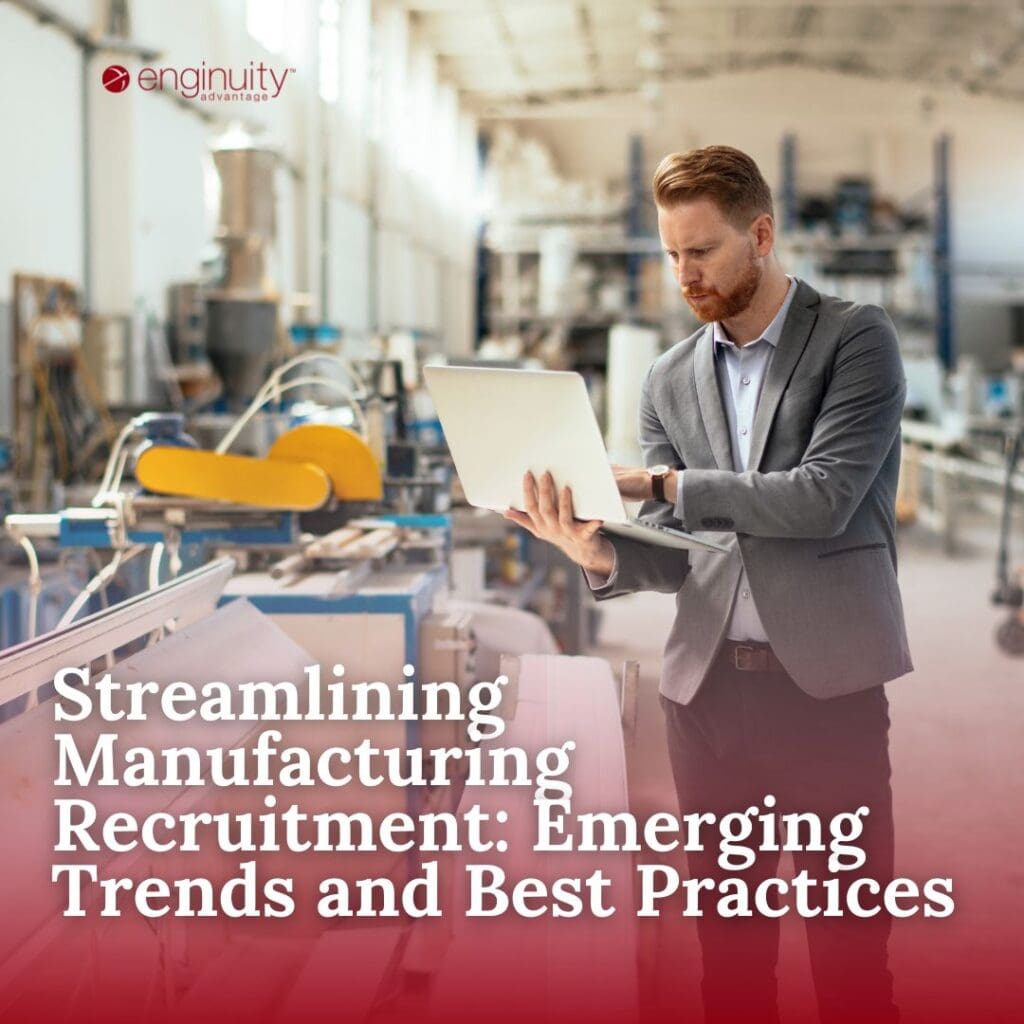Streamlining Manufacturing Recruitment: Emerging Trends and Best Practices

The race to snag top talent is more heated than ever. As a manufacturing engineering company, you know that the right team isn’t just nice to have – it’s essential. The manufacturing industry is expected to have 2.1 million unfilled jobs by 2030, largely due to skills gaps and retirements. But let’s be real, recruiting in this industry can sometimes feel like trying to assemble a complex machine without an instruction manual. The good news? There are emerging trends and best practices that can make this task less daunting and more efficient.
Understanding the Manufacturing Talent Landscape
First things first, let’s talk about the talent in manufacturing. It’s changing – and fast. Gone are the days when experience alone would cut it. Today’s manufacturing engineers are looking for careers that offer more: professional growth, work-life balance, and yes, a sense of purpose. With the integration of advanced technologies like automation, robotics, and AI in manufacturing processes, there’s an increasing demand for engineers with skills in these areas. The recruitment of workers with digital skills has become a priority for many manufacturing firms.
1. Embrace Digital Recruitment Strategies
To connect with these modern candidates, digital recruitment is key. This means more than just posting a job online. It involves leveraging SEO strategies with long-tail keywords like “innovative manufacturing engineering careers” or “cutting-edge manufacturing technology roles” to boost your job’s visibility. Social media platforms are also powerful tools – they’re where a lot of your potential candidates hang out.
2. Develop a Strong Employer Brand
Your company’s reputation matters big time. A strong employer brand that highlights your company’s culture, values, and commitment to employee growth can set you apart. Showcase what makes your company unique, whether it’s your cutting-edge projects, commitment to sustainability, or fantastic team culture. Remember, you’re not just offering a job; you’re offering a place where people can grow and contribute to something meaningful.
3. Offer Competitive Benefits and Opportunities for Growth
Competitive salaries are important, but they’re not the whole picture. Today’s manufacturing engineers are looking for roles that offer professional development opportunities and benefits that speak to their quality of life. The median annual wage for industrial engineers, including manufacturing engineers, was around $88,950 as of May 2020. Think flexible working conditions, opportunities for upskilling, and maybe even some cool tech to work with.
4. Focus on Inclusivity and Diversity
A diverse workforce isn’t just good PR; it’s good business. It brings in a range of perspectives that can drive innovation and problem-solving. 84% of manufacturing executives agree there is a talent shortage in the U.S. manufacturing sector, and many are looking at more diverse talent pools to fill this gap. Make sure your recruitment process is inclusive, reaching out to a broad range of candidates and ensuring that everyone gets a fair shot.
5. Streamline the Application Process
A complicated application process can be a major turn-off for candidates. Simplify it. Make it easy for potential employees to apply, and keep them informed throughout the process. A good candidate experience can make a huge difference in attracting top talent.
- Simplify the Application Form: Start by simplifying the application form. Ask for only the essential information initially, such as contact details, key qualifications, and relevant experience. Long forms with unnecessary fields can be off-putting and lead to a high drop-off rate.
- Mobile-Friendly Application Process: With a significant portion of job seekers using mobile devices for job searches, ensure that your application process is mobile-friendly. This means having a responsive design that is easy to navigate on smartphones and tablets.
- Use an Applicant Tracking System (ATS): Implementing an ATS can significantly streamline the recruitment process. It can automate various steps like sorting resumes, tracking the status of applications, and scheduling interviews. This not only makes the process more efficient for you but also improves the candidate experience.
- Clear Job Descriptions and Expectations: Provide clear and concise job descriptions. Candidates should be able to understand the role, responsibilities, and qualifications required without ambiguity. This clarity helps in attracting the right candidates and reduces the number of unqualified applications.
- Communicate Regularly and Transparently: Keep candidates informed throughout the application process. Automated emails acknowledging the receipt of applications, updates on the recruitment process, and clear timelines can enhance the candidate experience.
- Feedback Mechanism for Continuous Improvement: Establish a feedback mechanism to gather insights from candidates about their experience with the application process. This feedback can be invaluable in making continuous improvements.
- Reduce Time to Hire: Aim to reduce the time to hire. A lengthy recruitment process can result in losing candidates to other offers. By streamlining the application process and decision-making, you can shorten the time it takes to hire, thereby securing top talent more effectively.
6. Leverage Employee Referrals
Your current employees can be your best recruiters. They understand your company culture and the kind of talent that would fit in. A quarter of the manufacturing workforce is aged 55 or older, indicating a potential increase in retirement rates, which could exacerbate the skills gap. Plus, candidates referred by current employees tend to stick around longer.
7. Well-Being and Mental Health Checks
2023 marked the start of a significant focus on mental health and well-being within recruitment teams, a trend expected to grow in 2024. This shift is driven by the lasting impact of the pandemic on health awareness. Companies are increasingly implementing and evaluating mental health policies. The upcoming year will witness a rise in the use of employee well-being apps, surveys, and training programs, establishing employee mental health and well-being as a key focus in recruitment trends.
Your Recruitment Partner in Manufacturing
Recruiting in the manufacturing sector doesn’t have to be a headache. By embracing these trends and practices, you can streamline your recruitment process and attract the kind of talent that will drive your company forward.
And hey, if you’re looking for a little extra support, that’s where we come in. We specialize in helping manufacturing engineering companies like yours find the best talent. From fine-tuning your recruitment strategy to connecting you with top candidates, we’ve got you covered. Get in touch with us today, and let’s build a powerhouse team together.
Unlock Dream Careers & Elite Talent: Just One Click Away!


